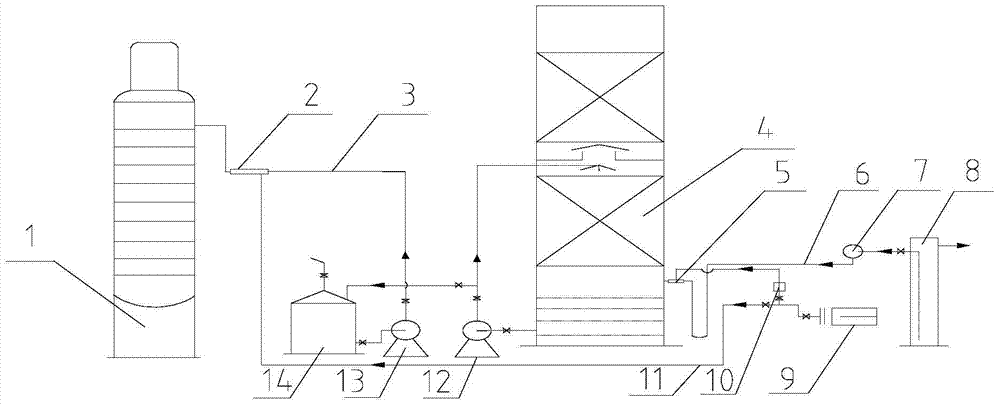A secondary utilization device and utilization process of coking crude benzene separation water
A technology for coking crude benzene and separating water, applied in the chemical industry, petroleum industry, combustible gas purification and other directions, can solve the problems of not completely and effectively solving technical problems, endangering the personal safety of centrifuge operators, affecting the health of employees, etc. The effect of industrial fresh water, improving environmental quality and preventing corrosion
- Summary
- Abstract
- Description
- Claims
- Application Information
AI Technical Summary
Problems solved by technology
Method used
Image
Examples
Embodiment Construction
[0018] A coking crude benzene separation water secondary utilization device and utilization process provided in this embodiment, such as flow figure 1 As shown, it includes two pipeline separation water pipes 6, lye sub-pipelines and alkali-adding pipe 11 arranged in parallel. Wherein, the alkali adding pipeline includes a lye pump 9, and the lye pump 9 is connected to the residual ammonia water mixer 2 through the alkali adding pipe 11, and then input to the ammonia distillation tower 1 through the excess ammonia water mixer 2. The separated water pipeline includes a light benzene control separator 8, the outlet 7 of the light benzene control separator 8 is connected with a separated water pipe 6, and the separated water pipe is connected to the lower section of the final cooling tower 4, and the separated separated water is directly introduced into the In the lower part of the final cooling tower 4, the separated water enters the final cooling tower 4 continuously through th...
PUM
| Property | Measurement | Unit |
|---|---|---|
| height | aaaaa | aaaaa |
Abstract
Description
Claims
Application Information
 Login to View More
Login to View More - R&D
- Intellectual Property
- Life Sciences
- Materials
- Tech Scout
- Unparalleled Data Quality
- Higher Quality Content
- 60% Fewer Hallucinations
Browse by: Latest US Patents, China's latest patents, Technical Efficacy Thesaurus, Application Domain, Technology Topic, Popular Technical Reports.
© 2025 PatSnap. All rights reserved.Legal|Privacy policy|Modern Slavery Act Transparency Statement|Sitemap|About US| Contact US: help@patsnap.com

